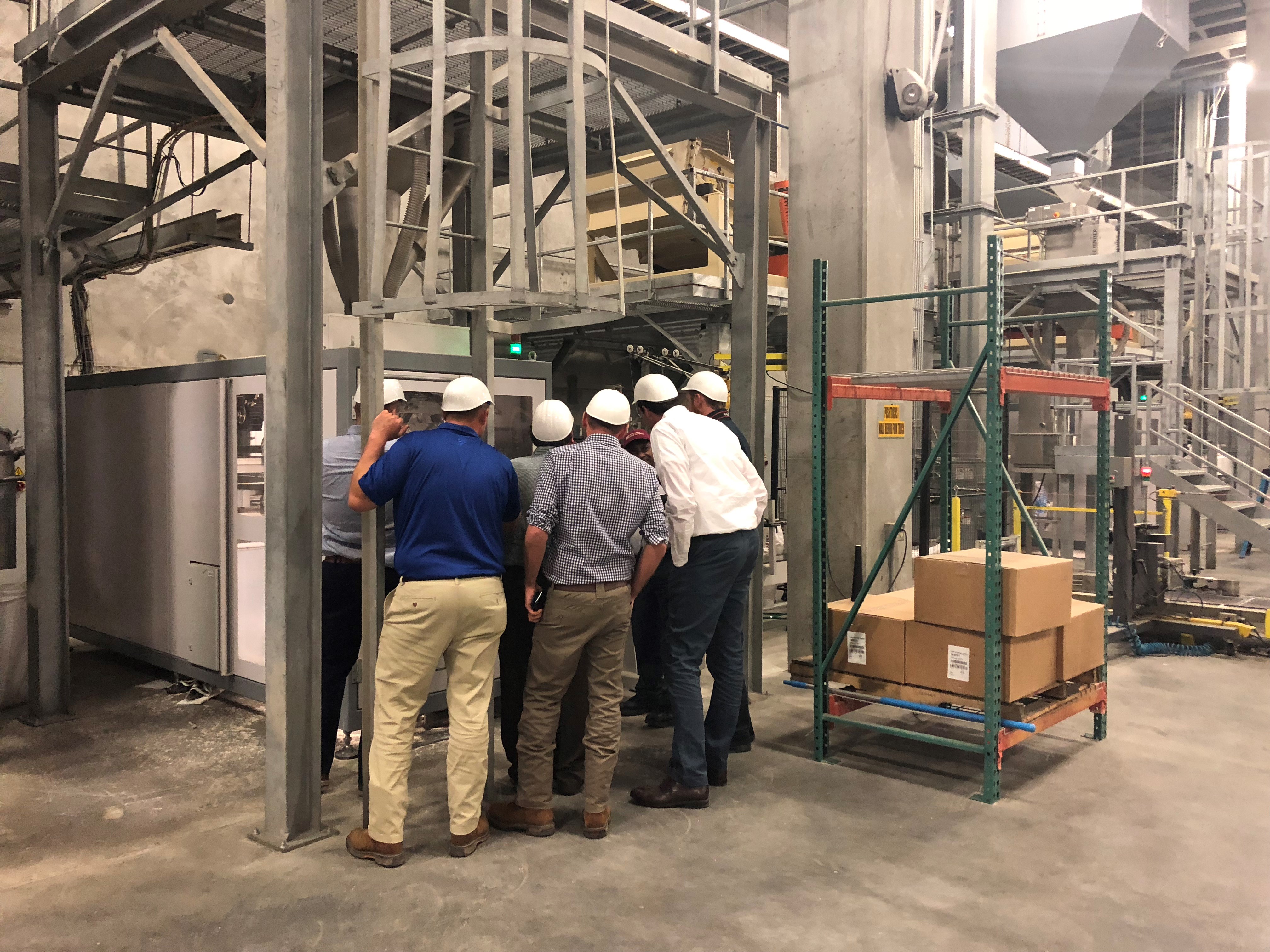 Another stop on the journey - packaging company JonPac Inc.
Another stop on the journey - packaging company JonPac Inc.
May 04, 2018
By Matthew Sligar
[Matthew Sligar is a member of the 2018-20 Rice Leadership Development class. His report on Session 1 has been edited for length]
GRIDLEY, CA -- As a California rice farmer I plant my seed, harvest the rice, and sell it. That’s my workflow in a rice hull - I work within the rice industry. The Rice Leadership Development Program asks us to consider how rice farmers, like myself, can be contributory and not just work within the rice industry, but also for the rice industry. How can I help represent, advocate, and elevate the industry as a whole?
The answer, as laid out by the program, is to learn, through experience about the diversity of rice production across the United States, the layers of domestic business, and the intricacies of foreign trade. Much of this was realized throughout the first session of the program last month.
While traveling through Texas and Louisiana, we covered the entire spectrum of the rice industry from breeding seed to loading ships with rice for export. We learned a great deal about the journey of southern grown rice. We followed rice through the entire production process and shook the hands of scientists, farmers, millers, and marketers - the very hands that carry the grain along the journey.
The journey of southern grown rice begins with the breeding process of seed and what happens in laboratories, nurseries, and test-plots before such seed reaches the growers’ hands. We learned about pure-line and hybrid breeding programs at RiceTec Inc. (Alvin, TX) and at the LSU Rice Research Station (Rayne LA) and saw the differing approaches of a private company versus an academic institution with the common goal of breeding a rice variety with strong genetic traits for healthier growth, higher yield potential, and better milling quality.
At LR Farms (El Campo, TX) we stepped onto Linda and LG Raun’s farming operation just after their rice fields had been planted with CL151, a long-grain variety developed at LSU. We learned that their ranch, like many rice farms, relies predominantly on well-pumped groundwater - a major difference to California’s farming operation and reliance on delivered surface water. A similarity to California farming is the rising tide of water scarcity, the rural-urban resource tug-of-war, the demand and, ultimately, the need for additional surface water storage.
Meanwhile, the Lower Colorado River Authority (Lane City, TX), just down the road from LR Farms, is completing its Arbuckle Reservoir, a 1,100 acre off-channel reservoir that will capture a potential 40,000 acre/ft of surface water. Visiting the site and learning about the politics, engineering, and hard work that went into such an impressive project incited both admiration and envy - envy in that I wish California would make a similar investment in infrastructure.
Seed and water are certainly two key factors in raising a crop of rice, but without the tractors and implements to work the ground, plant the seed, and harvest the grain, the scale of efficiency and productivity would not be possible. Terry Hlavinka of the Hlavinka Equipment Company (El Campo, TX) explained how his business services not only local farmers, but also farmers across the United States and around the world.
At Fred and Paul Zaunbrecher’s rice and crawfish farm (Duson, LA), we rode in a crawfish boat over several inches of water as rice stubble and sporadic crawfish traps peaked out above the surface. The Zaunbrechers implement an annual rotation between crawfish and rice in their fields.
Though impossible to witness a southern rice harvest, we did visit Rice Belt Warehouse (El Campo, TX) where last year’s harvested rice was dried and stored. Dick Ottis, president and CEO, explained that due to their vast infrastructure, they identity preserve an individual rice farmer’s crop. Every farmer has his own bin preserving his quality-grade and specific variety, allowing him to best market his own rice for the greatest return.
The approach to marketing rice from a broker's perspective came from Michael Creed of Creed Rice Company (Houston, TX) and Jay Davis of East Bernard Rice Marketing (East Bernard, TX).
At both Douget’s Rice Mill (Beaumont, TX) and Farmer’s Rice Milling Company (Lake Charles, LA), we witnessed the automation of rice milling. At JonPac Inc. (Crowley, LA) we saw raw plastic pellets transformed into woven poly bags. These traditional bulk retail bags are then filled with several brands of rice, many from local farmers. While at Riviana Foods (Houston, TX) we learned how their marketing directors and brand managers research and develop the labeling and packaging of their rice products to successfully attract consumers.
Before consumers have the opportunity of choosing a particular bag of rice from the supermarket shelf, one last leg of the journey must take place: transport. While visiting the South Louisiana Rail Facility (Iowa, LA) and Russell Marine Group (New Orleans, LA), we learned how rice travels across the state and overseas.
If knowing where your food comes from is rewarding to a consumer, then thoroughly understanding the rice industry and the work that it took to get the grain to a happy consumer is just as rewarding to a rice farmer.